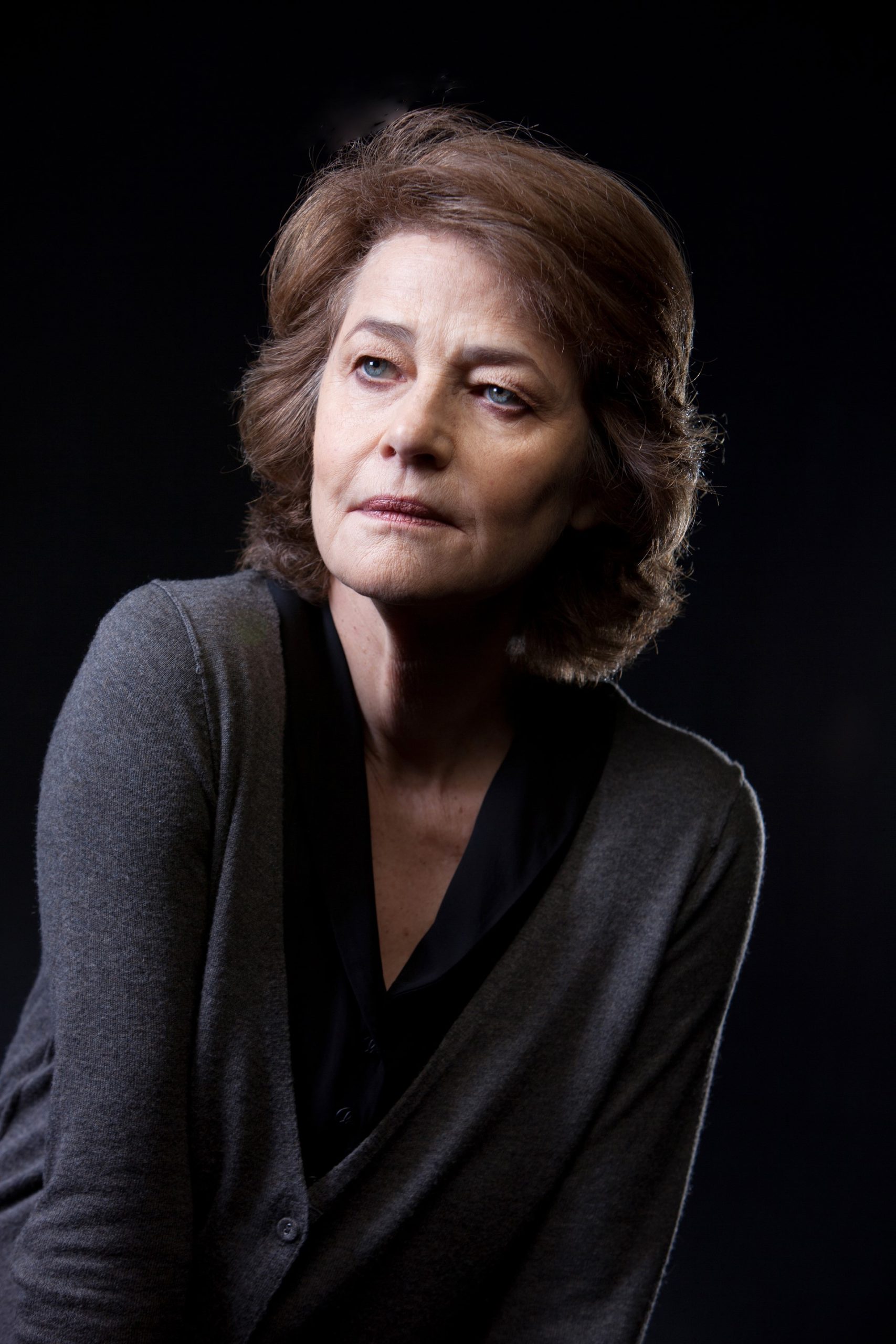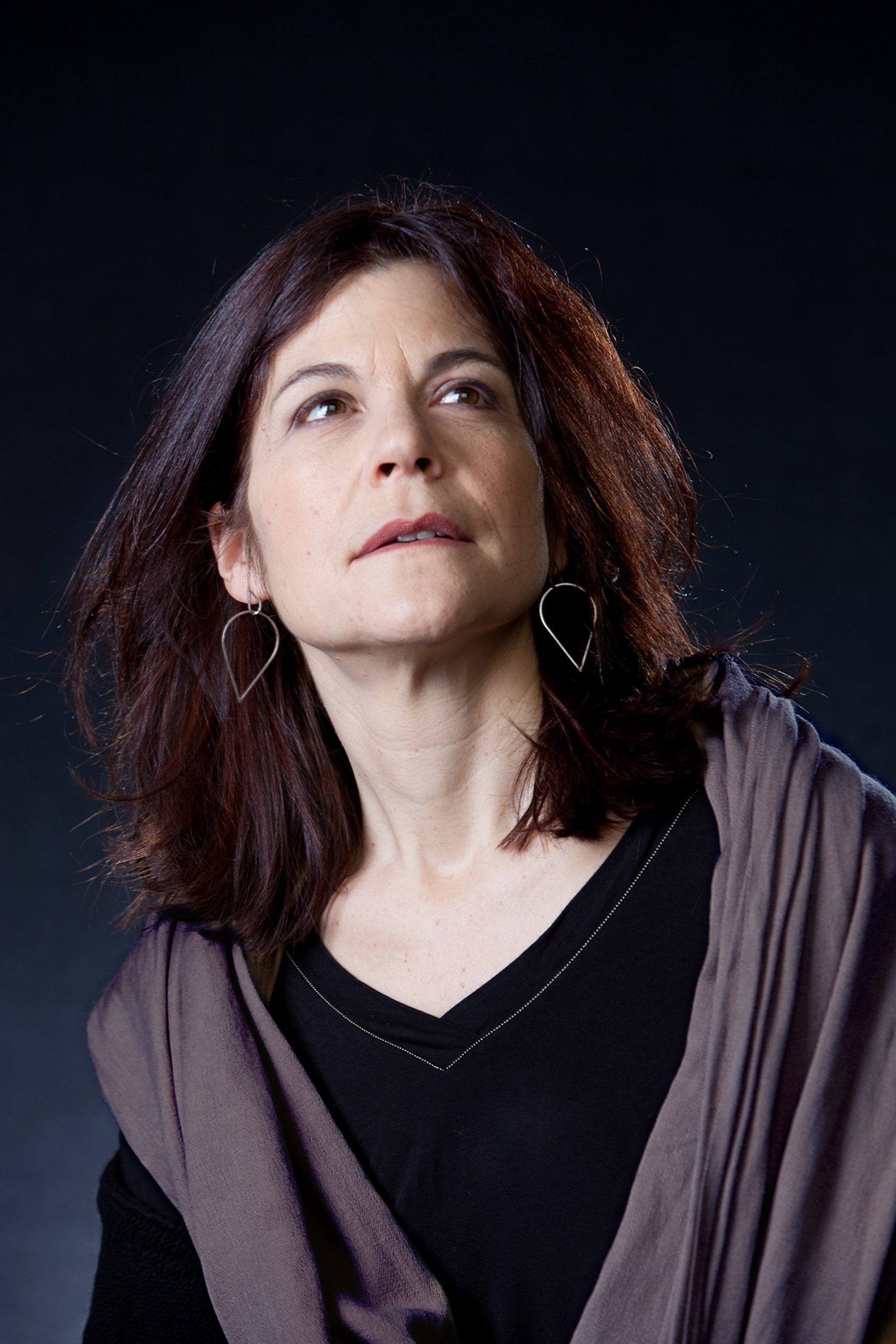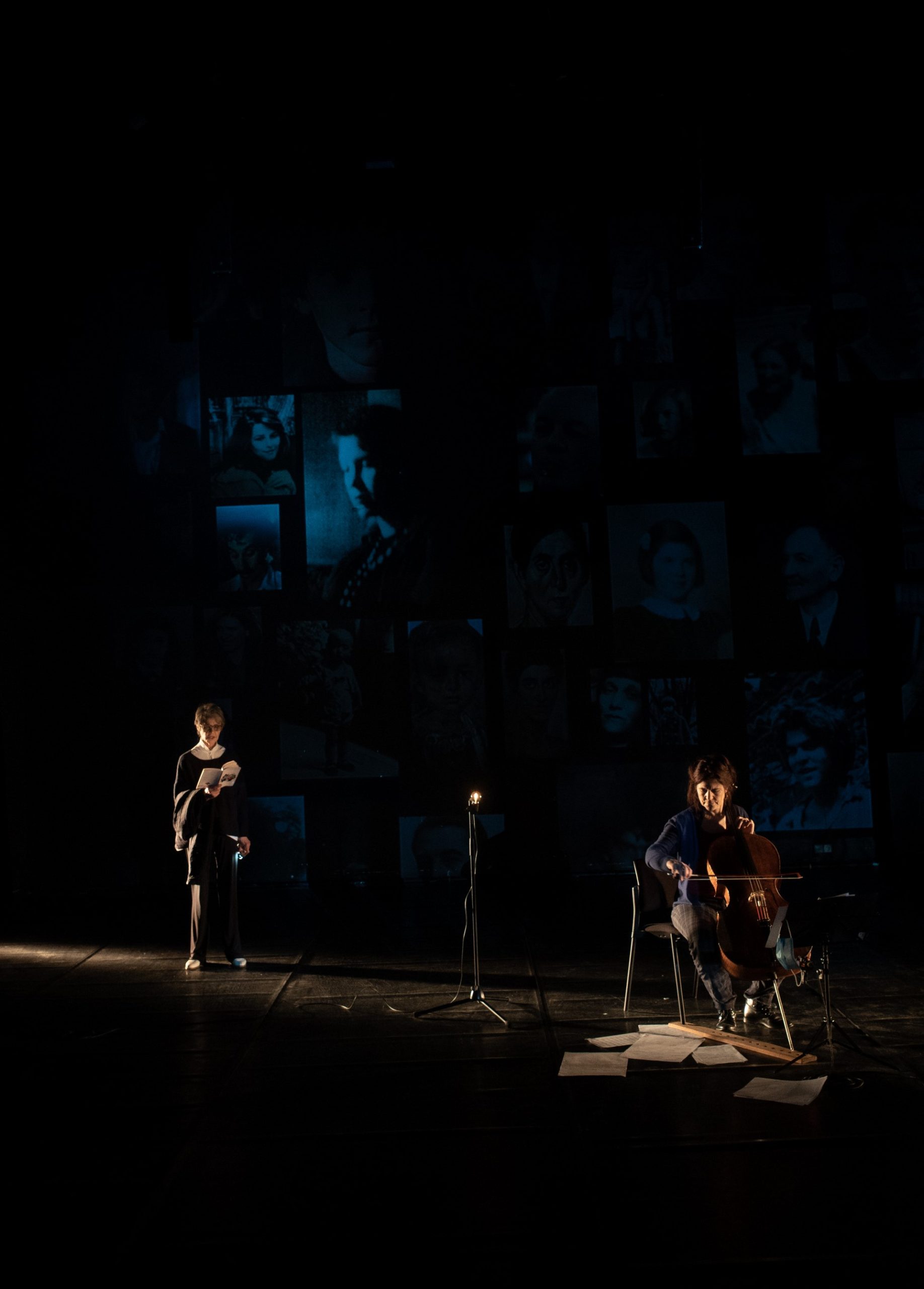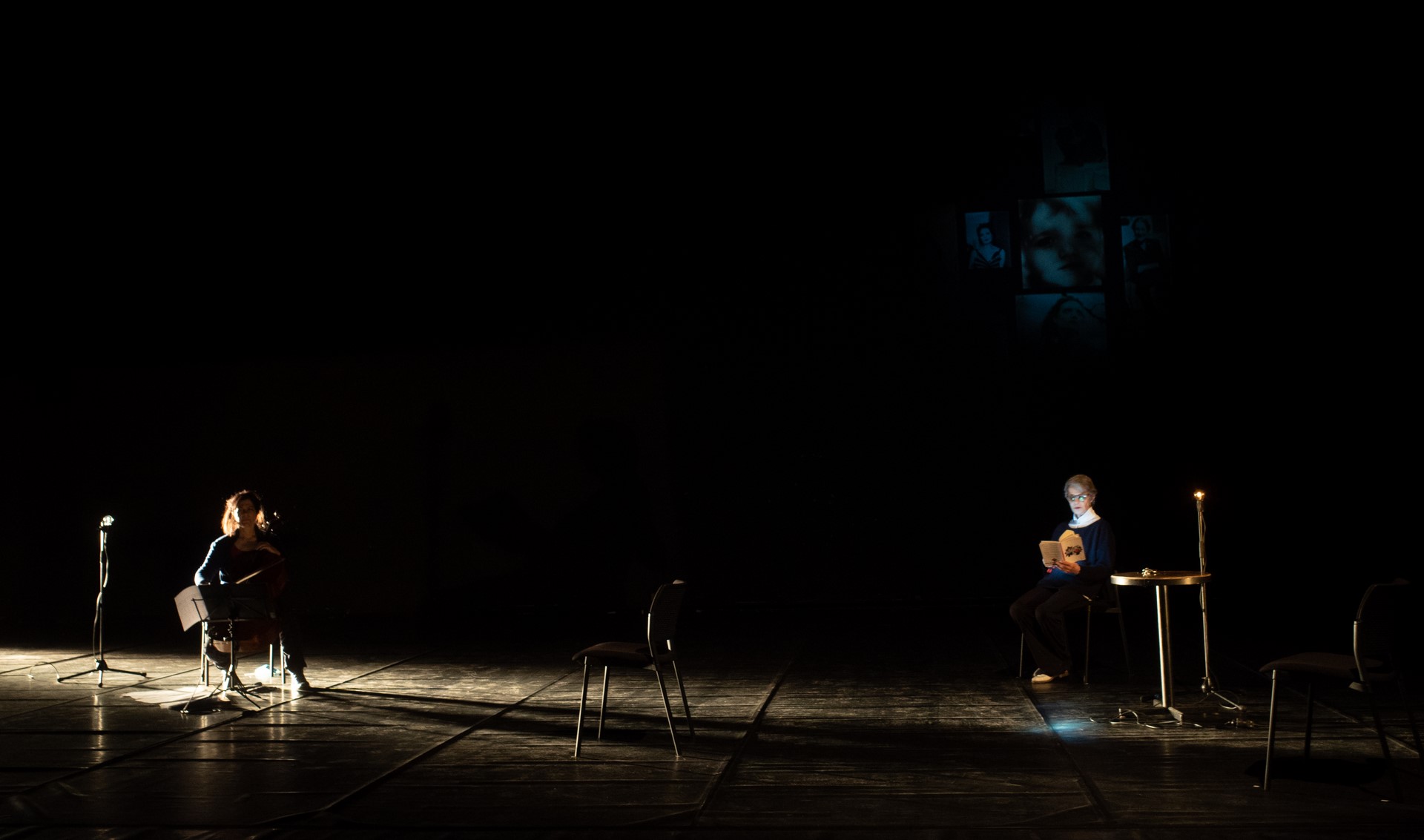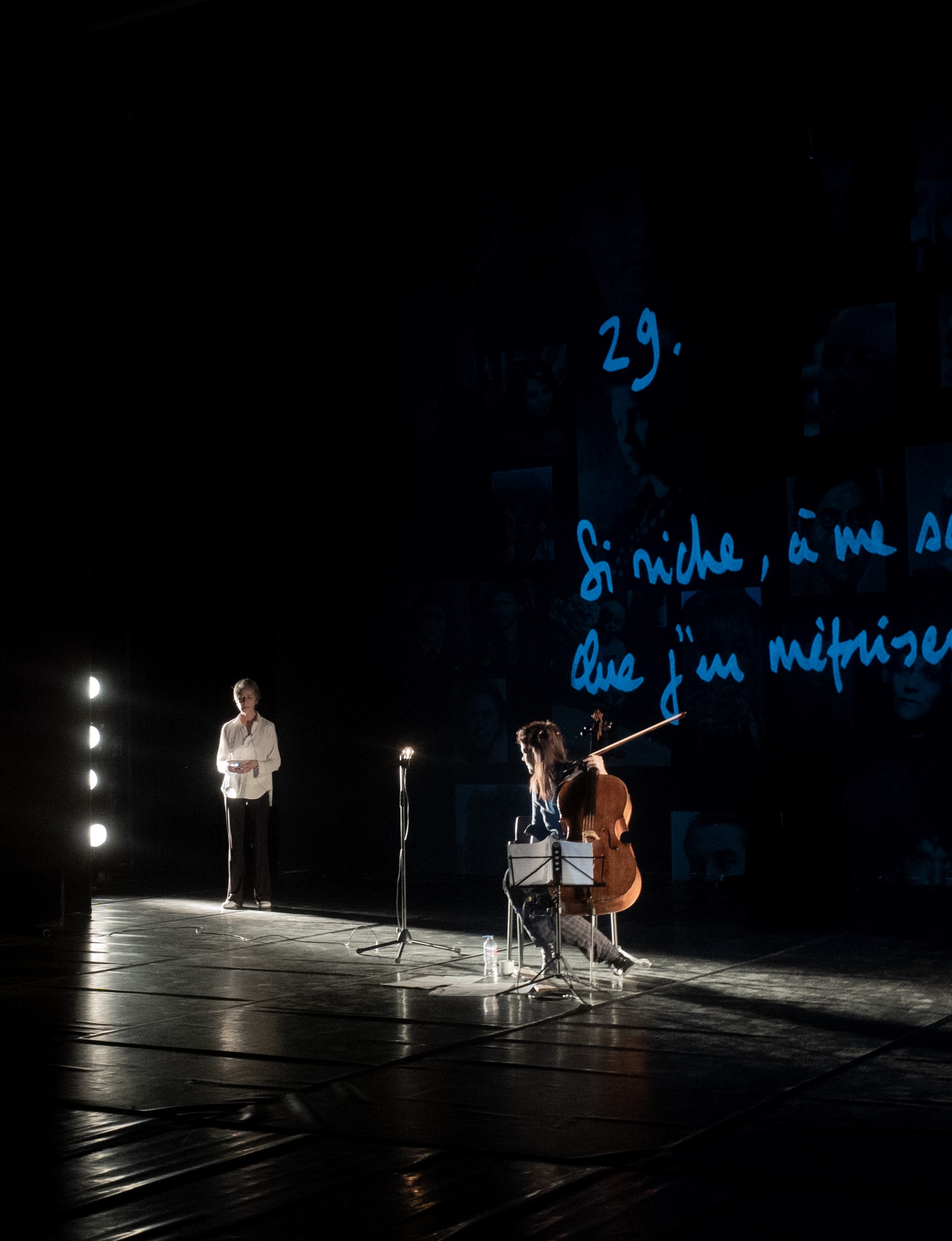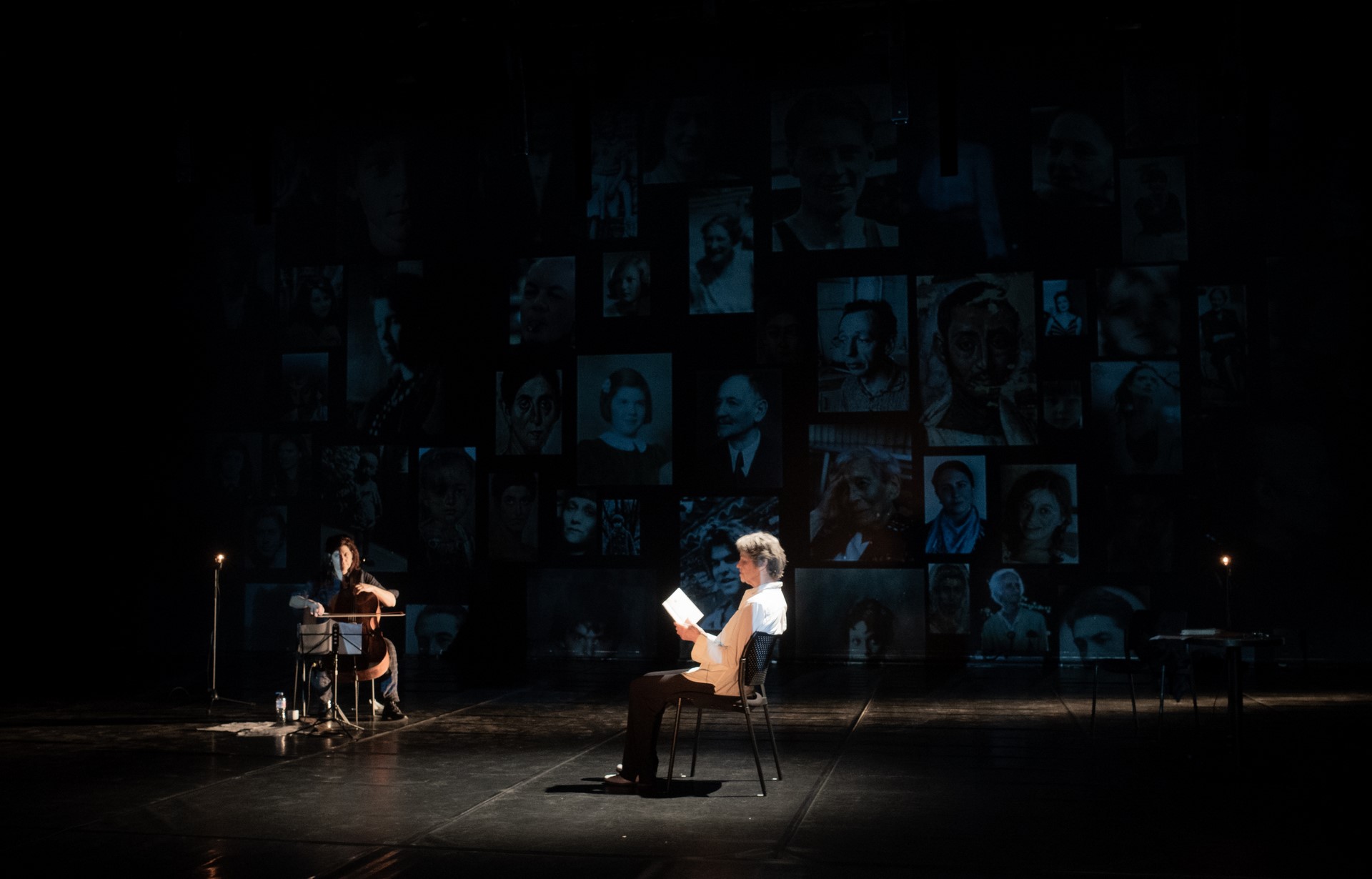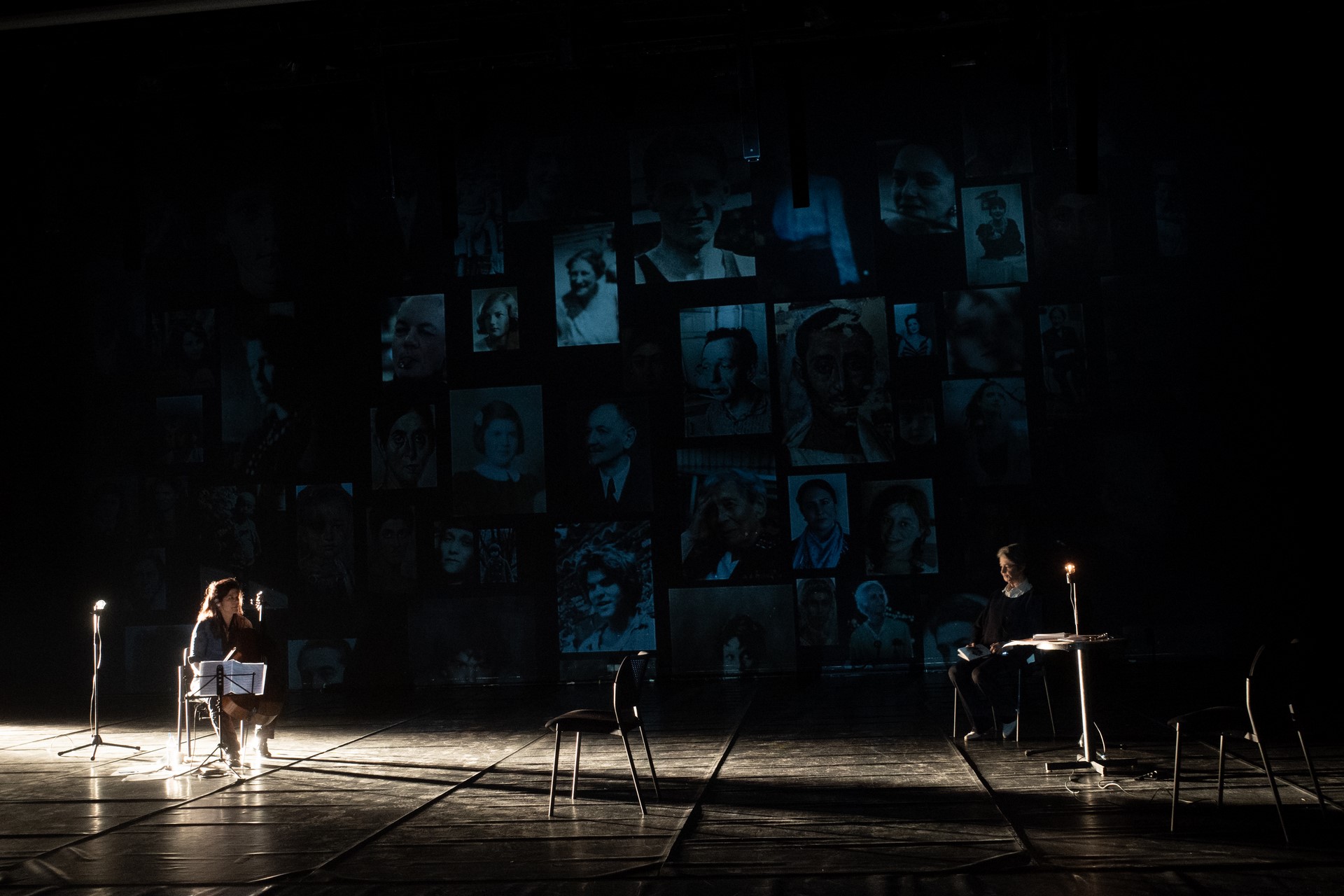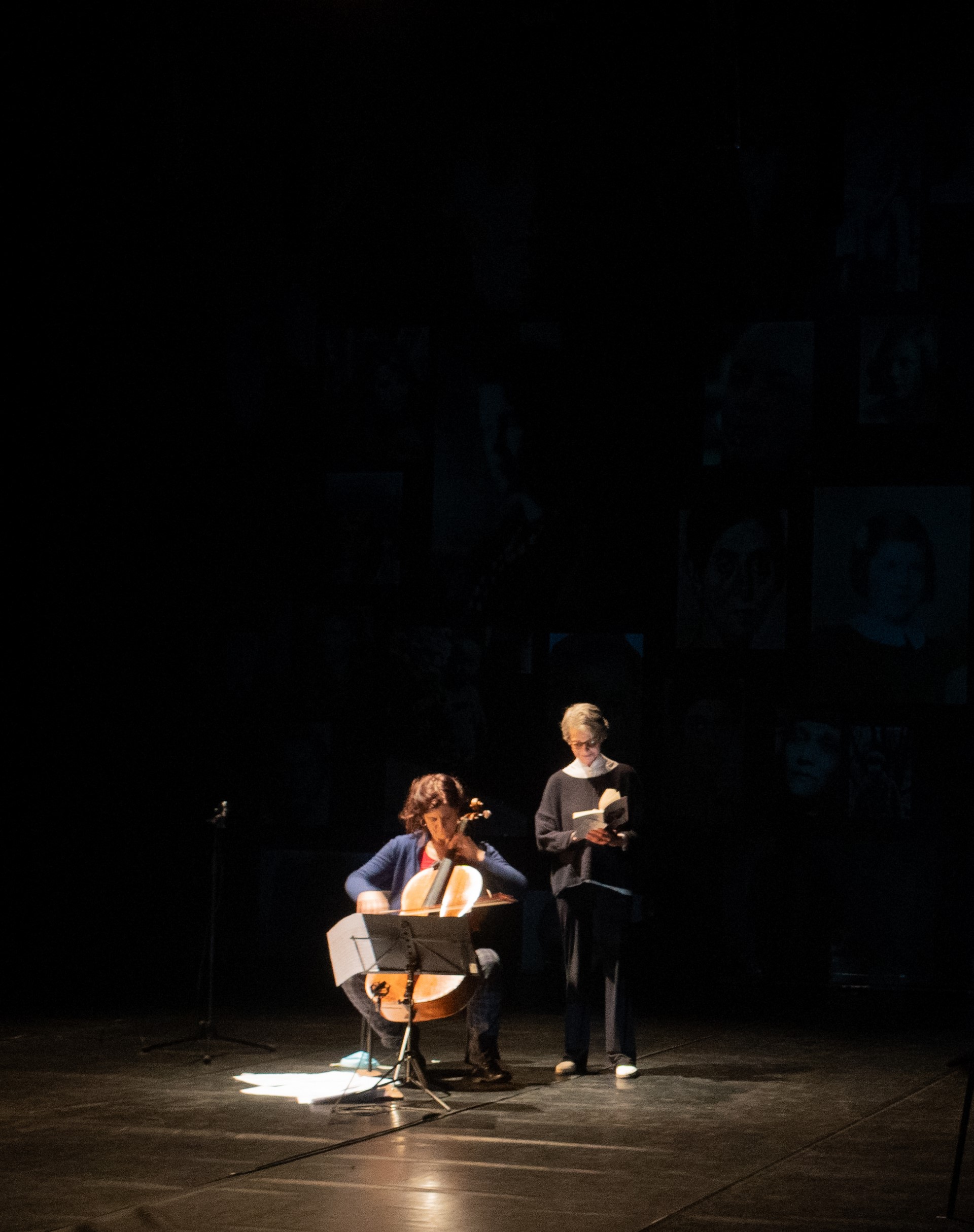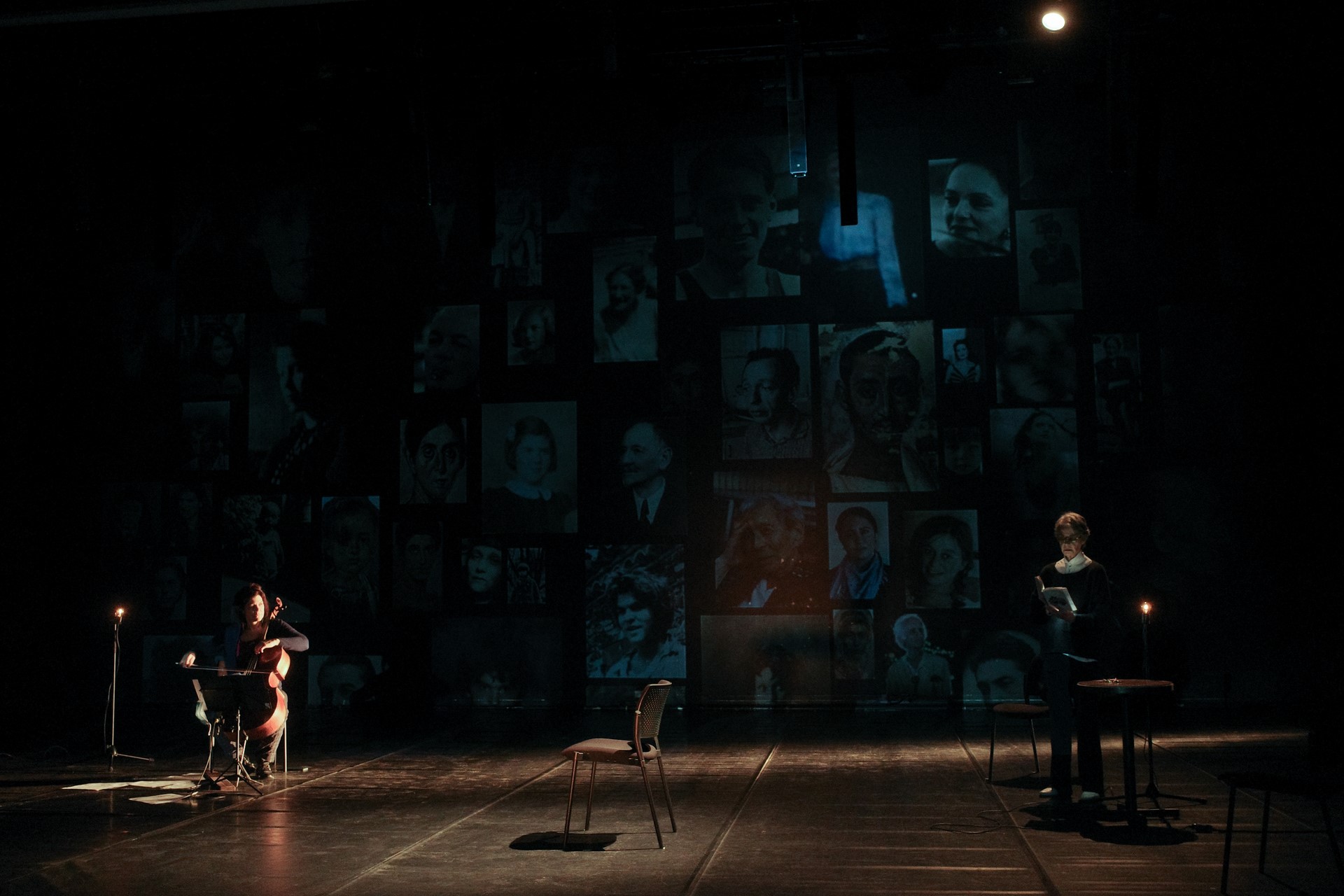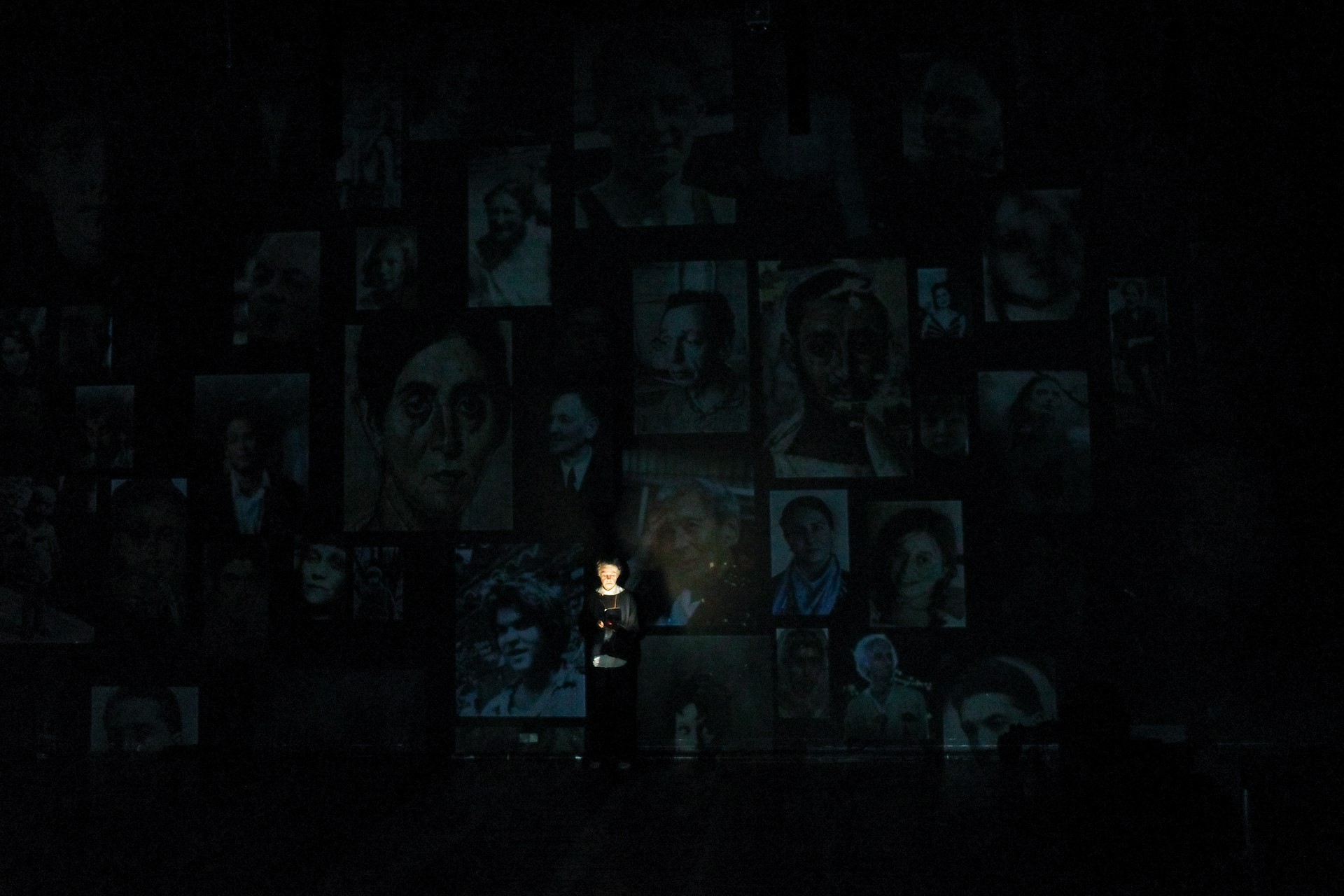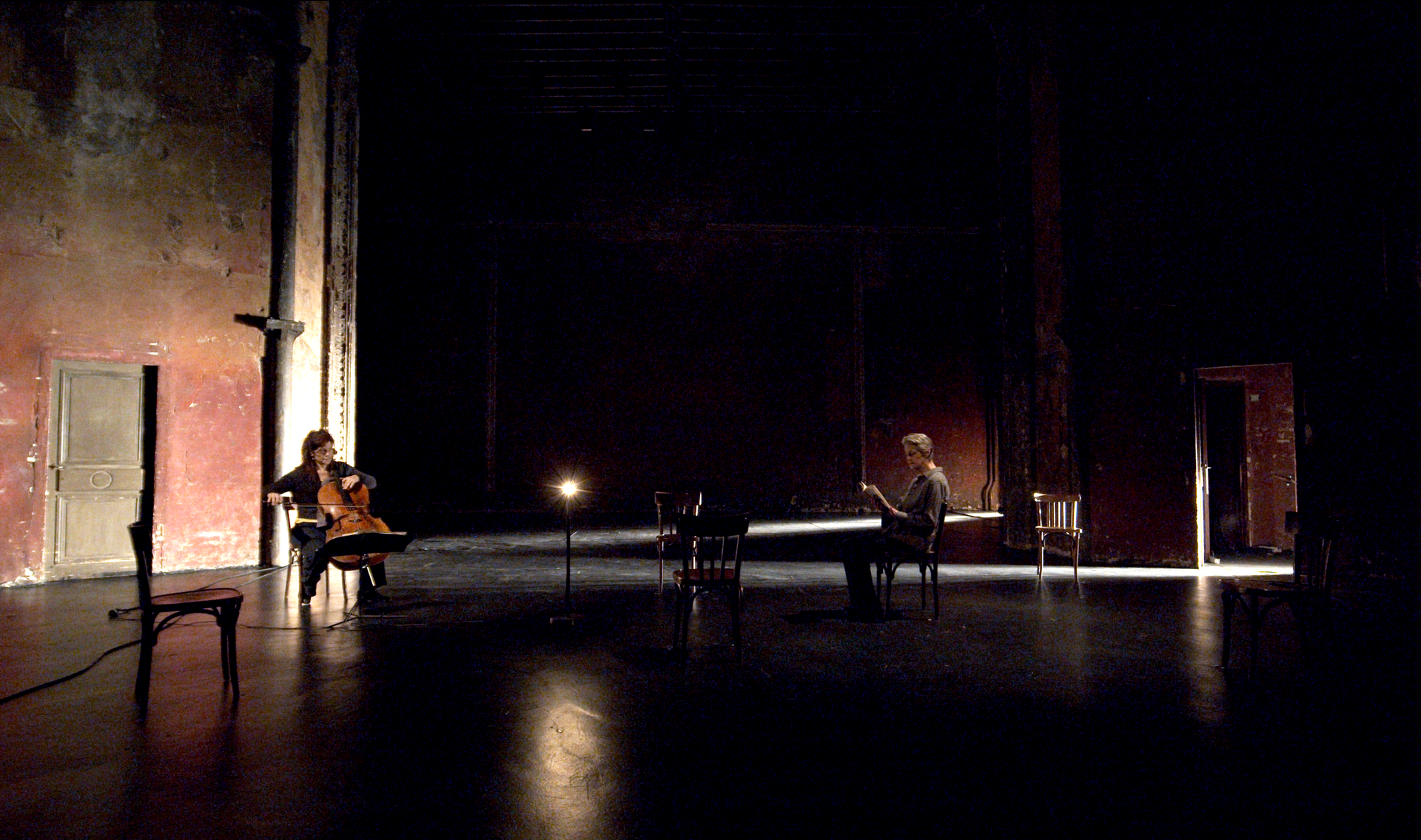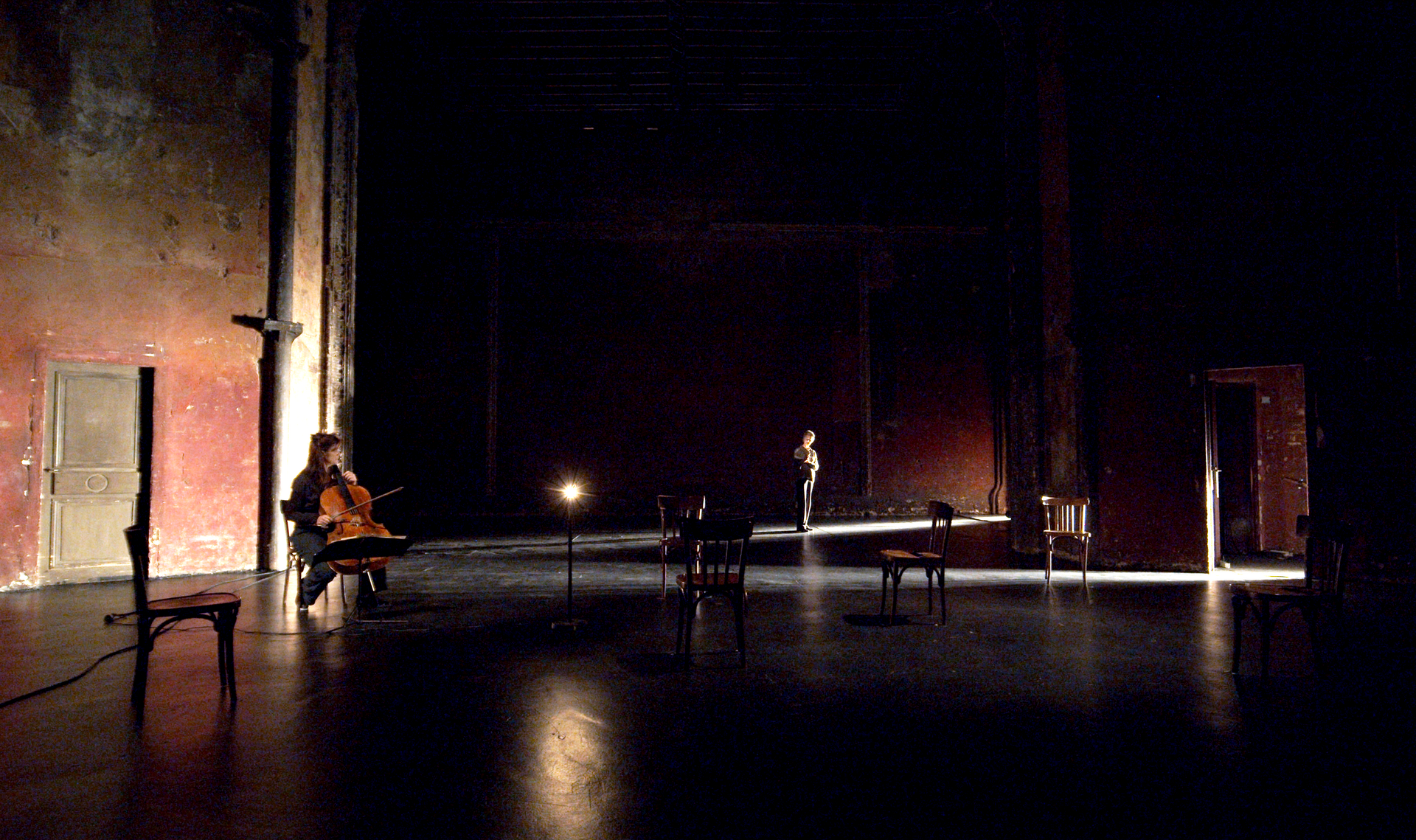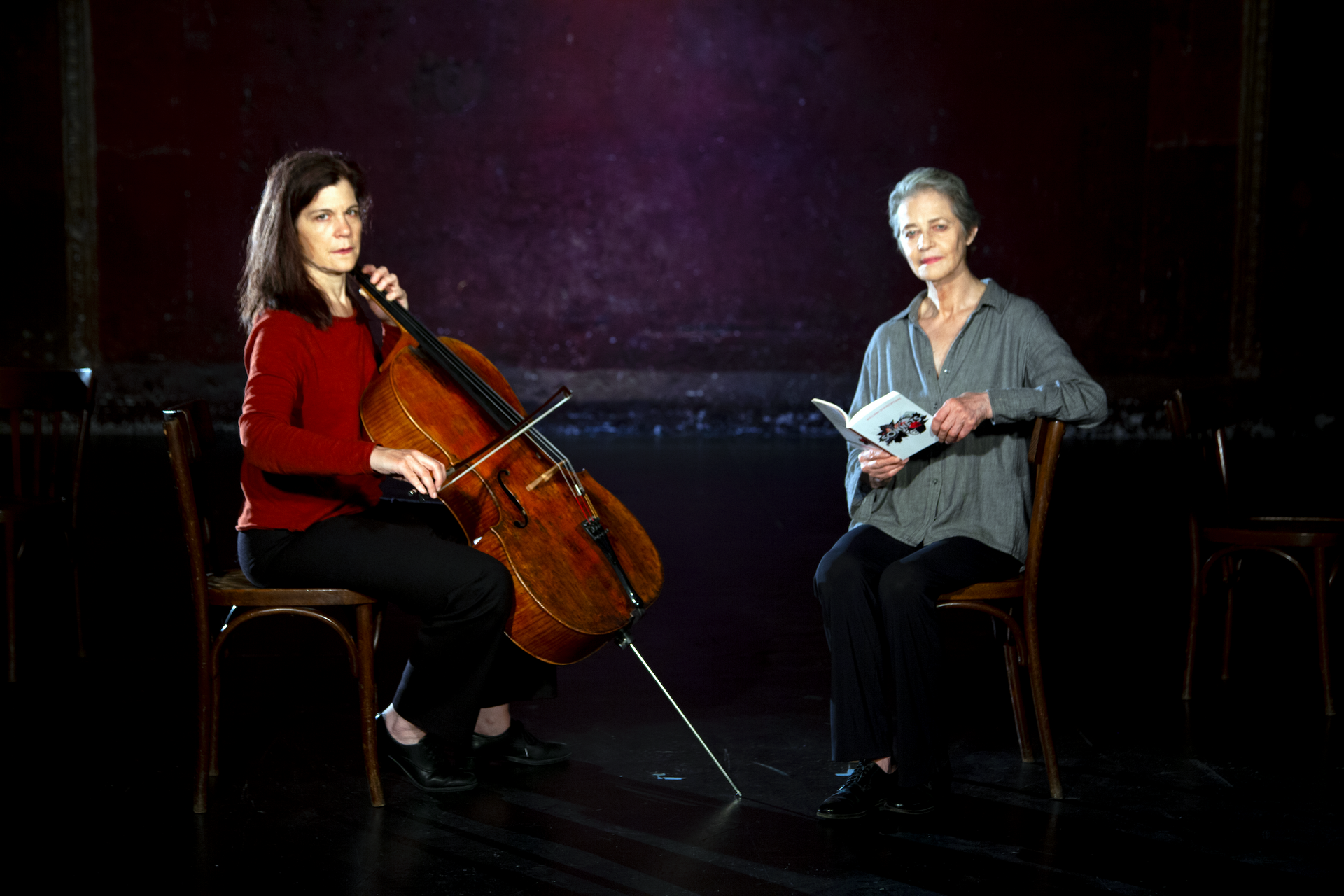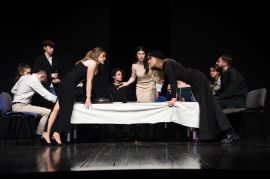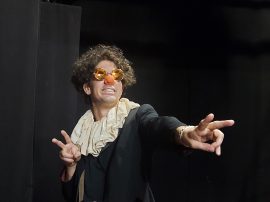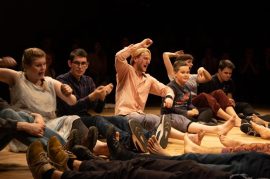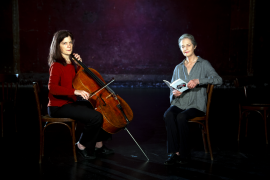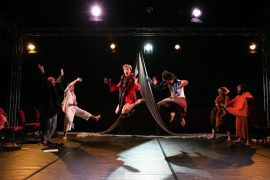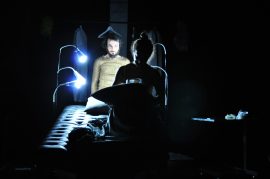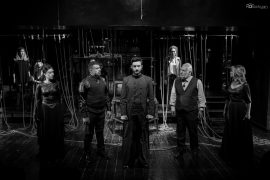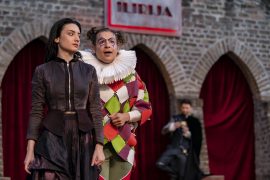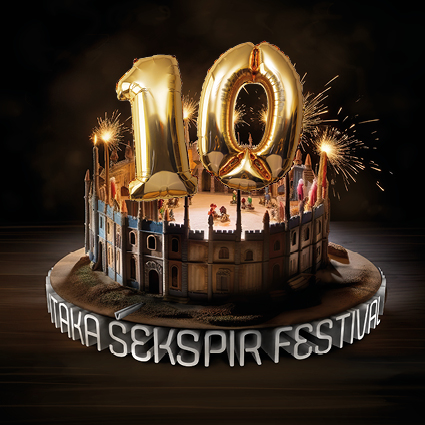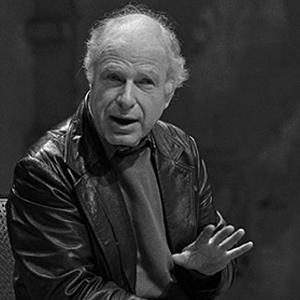SHAKESPEARE / BACH
Thursday, 12 October at 20.00 Serbian National Theatre, Novi Sad
MAIN PROGRAMME
SHAKESPEARE / BACH
Théâtre des Bouffes du Nord (France)
Stage direction and cello: Sonia Wieder-Atherton
Voice: Charlotte Rampling
Lights: Jean Kalman
Video: Quentin Balpe
Sound design: Alain Français
Sound creation: Sonia Wieder-Atherton and Alain Français
Accessories: Manon Iside
Stage manager and lighting: Héloïse Evano
With Marc Zeitline's voice
Premiered on March 8, 2022 at Théâtre des Bouffes du Nord
On tour 22/23
Duration : 1h10
Sonia Wieder-Atherton thanks Diane Polya and all the team of the Théâtre Antoine Watteau - Nogent-sur-Marne.
Production Centre International de Créations Théâtrales / Théâtre des Bouffes du Nord
CoProduction Cercle des partenaires
In accordance with Les Visiteurs du Soir
With the support in residency by Théâtre Antoine Watteau - Nogent-sur-Marne
PRODUCTION NOTES
“Sometimes the memory comes back, bringing with it faces, names, bits of stories and sounds. From this place emerge sonnets of Shakespeare, sometimes distant from a penetrating presence. As if they were addressed to these faces or if they were the faces that told us them. The cello, through Bach’s suites, brings back parts of memory and sculpts time.”
Sonia Wieder-Atherton
Actress Charlotte Rampling and cellist Sonia Wieder-Atherton set up a poetic dialogue between
Shakespeare’s sonnets and Bach’s suites.
We’re not introducing Charlotte Rampling anymore. The British actress, known for her many films, from Luchino Visconti to François Ozon, left her mark on cinema with her magnetic play and look. In the field of music, Sonia Wieder-Atherton also occupies a prominent place. The vibrant cellist – also a composer – attaches great importance to contemporary creation and the other arts. In 2013, the two artists have already combined their talents with Danses nocturnes, a show combining poetry and literature through cello suites by Benjamin Britten and texts by the poet Sylvia Plath. For their second collaboration, it is William Shakespeare who meets the universe of Johann Sebastian Bach, the sonnets of one echoing the cello suites of the other
From the sonnets of Shakespeare
A suite by Bach
Charlotte Rampling and Sonia Wieder-Atherton
So that the light of an encounter may shine
The rhythm of two languages
The song of their voices.
TEXT AND MUSIC
Sonnets of Shakespeare
Sonnets n° 17/19/16/24/55/18/136/144/10/5/73/116/29
Serbian translation Danijela Kambaskovic-Schwartz
Music
Bach : Suite N. 1 BWV 1007 Prélude
Suite N.4 BWV 1010 Courante et Sarabande
Suite N.5 BWV 1011 Allemande, Bourrées et Sarabande
Suite N.6 BWV 1012 Prélude
Monteverdi : A voce sola (arrangement Sonia Wieder-Atherton)
Hor Ch’el Ciel Et la Terra (arrangement Sonia Wieder-Atherton)
Lotti : In una siepe ombrosa extrait
Wieder-Atherton : Chant de là-bas
BIOGRAPHIES
CHARLOTTE RAMPLING
Actress Charlotte Rampling is the daughter of Godfrey Rampling, colonel of the British army who was, under the colors of the United Kingdom, Olympic champion of athletics at the relay 4 400 meters at the Berlin Olympic Games of 1936, and Anne Isabelle (née Gurteen), painter. She is 8 years old when her family moves to Fontainebleau. Enrolled in the communal school, she learns French there. Back in England, the teenager performs in music shows with her older sister Sarah, and then briefly works as a model. Like Jane Birkin and Jacqueline Bisset, Charlotte Rampling made her screen debut in the flagship film of «Swinging London», Le Knack... et comment l'avoir (1965), then toured in successful comedies while taking drama classes at the Royal Court School. But, marked by the brutal death of her sister, she decided to leave Britain. Based in Italy, she made her first significant meeting there, that of Luchino Visconti who directed her in The Damned (1969). She then moved on to the world of science fiction with Zardoz (1974) by John Boorman, to that of sadomasochism with Night Porter (1974) Liliana Cavani, a film that reveals her to the general public where she plays a survivor of the Nazi camps who has a strange relationship with her former executioner (played by Dirk Bogarde). Enjoying exploring through her roles the most troubled areas of the human soul, she plays in front of Oshima’s camera the role of a woman who falls in love with a chimpanzee in Max mon amour (1985). She also starred alongside Robert Mitchum in the detective film Adieu Dick Richards (1975), in Woody Allen’s Stardust Memories (1980), and starred Sidney Lumet in The Verdict (1982) against Paul Newman. Living in France from the late 1970s, she toured with Yves Boisset in Un taxi mauve, Lelouch with Viva la vie! and Jacques Deray in the thriller On ne Died only twice (1985). Less present on the screens in the 1990s, it delivers benefits in 2000 noticed in La Cerisaie (after Chekhov) and the singular Signs and Wonders by Jonathan Nossiter. The following year, she starred in Sous le sable, a portrait of a distraught woman after her husband’s death, directed by François Ozon, a filmmaker whom she then met again for Swimming Pool, where she gave a reply to the young Ludivine Sagnier. In 2001, she received a Caesar of Honour, which rewarded her entire career. She has distinguished herself in comedy (Kiss Who You Want, 2002) as well as thriller (Lemming), auteur film (Vers le sud, 2006) or Hollywood entertainment (Basic Instinct 2). In 2010, she appeared in the Allianz commercial and played one of the main roles in the final season of the Dexter3 series. In 2019, she is in the distribution of Denis Villeneuve’s sci-fi film Dune, scheduled to be released in 2021.
SONIA WIEDER-ATHERTON
Violoncelliste Sonia Wieder-Atherton has always sought to make music an open language to the world. It is this research that has led it over time from one repertoire to another, from discovery to discovery. In a permanent exploration. Turning and turning the trajectories, deviating the borders, thwarting the presuppositions in a tireless search of meaning. She was born in San Francisco to a Romanian mother and an American father. She grew up in New York and then in Paris. In Paris, she entered the Conservatoire National Supérieur in the Class of Maurice Gendron. At the age of 19 she passed the Iron Curtain and went to live in Moscow to study with Natalia Shakhovskaya at the Tchaikovsky Conservatory. She will keep within her these Russian years, in addition to a teaching of excellence, a special relationship to time, stories and men. Back in France, at the age of 25, she won the Rostropovich Competition. Sonia WiederAtherton experimented constantly. She collaborated with many contemporary composers (Pascal Dusapin, Georges Aperghis, Wolfgang Rihm…) and became their privileged interpreter. Her play, her style, are immediately identifiable, which makes her a rare performer. She plays as a soloist under the direction of many conductors, with among others: the Orchestre de Paris, the Orchestre National de France, the Orchestre National de Belgique, the Philharmonique de Liège, the Philharmonique d'Israël, the Orchestre Gulbenkian de Lisbonne, the Luxembourg Philharmonic Orchestra, the Hanover NDR Orchestra, the REMIX Ensemble, Les Siècles, Asko/Schönberg… and collaborates regularly with musicians with whom she records and plays in concert (Imogen Cooper, Raphaël Oleg, etc.). In recent years, she has been at the origin of many projects that she conceives and directs: Jewish songs, a cycle for cello and piano where she is inspired by the art of the Hazans. Chants d'Est, for cello and instrumental ensemble, conceived as a journey from Russia to the Mittel Europa. Vita, for solo cello and three cellos, where she recounts the life of Angioletta-Angel through two geniuses out of their time, Monteverdi and Scelsi. Odyssey for cello and imaginary choir, a woman alone with her cello accompanied by a soundtrack, confronts the elements. Wind, waves, chaos, storms… Little Girl Blue, from Nina Simone. For Sonia Wieder-Atherton. To play Bach, Beethoven, Jewish songs or Nina Simone, is to make the same gesture, it is to ask the same question: that of a voice that can never be understood if it is listened to in isolation. Sonia Wieder-Atherton constantly pushes the limits of her explorations and it is in this same research that she turns with her cello towards other expressions: are added projects such as D'Est en musique, show conceived with the images of the film D'Est by Chantal Akerman. Nocturnal dances, with Charlotte Rampling, where the works of Benjamin Britten and Sylvia Plath meet. Night Ship, by Marguerite Duras, with Fanny Ardant. Exil, a creation for cello, piano and eight voices. Chantal? A new installation, creates in 2018 in Paris, in the form of a dialogue between the cello and Chantal Akerman in her first film Saute ma ville. His last creation La Nuit des Odyssées was given to the Philharmonie de Paris. In 2020, Wieder-Atherton signed an editorial partnership with Alpha Classics which saw the release of new recordings and the reissue of some of her records. I n 2011, she received the Bernheim Foundation Prize for the Arts, which named three laureates each year whose work has creative value in each of the fields of arts, letters and sciences. In 2015, she was named Chevalier de l'Ordre des Arts et des Lettres. July 1, 2018 Sonia Wieder-Atherton played for the nation’s solemn tribute to Simone Veil at the Pantheon.
 english
english  srpski
srpski 
